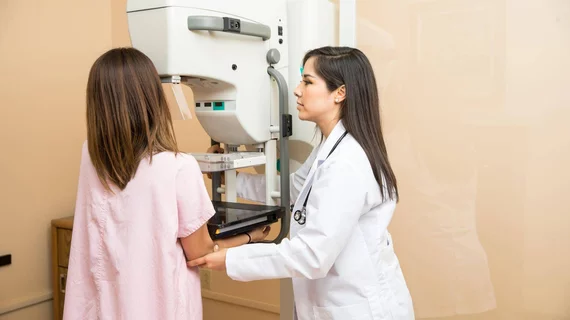Combining traditional digital mammography with tomosynthesis detects 90 percent more breast cancers than mammography alone, Italian researchers reported in Radiology this month—but the jury is still out on whether the benefits of combining screenings outweigh any clinical risks.
“Tomosynthesis and digital mammography is much more sensitive than digital mammography,” principal investigator and radiologist Pierpaolo Pattacini, MD, told the Radiological Society of North America of his work, in which he and colleagues at AUSL Reggio Emilia hospital randomized nearly 20,000 women to either conventional screening or digital mammography plus digital breast tomosynthesis.
Combined, the imaging methods detected 8.6 cancers per 1,000 cases—almost twice the 4.5 per 1,000 detection rate of mammography alone. Tomosynthesis itself single-handedly found 72 of 80 cancers detected in the joint imaging group, and both patient groups saw similar recall rates.
“The vast majority of the advantage is due to tomosynthesis alone,” Pattacini said, but that increased sensitivity could have serious diagnostic consequences. He said the hike in detection rates for combined digital mammography and tomosynthesis was higher for ductal carcinoma in situ than for invasive cancers, and that, while there were gains in detecting cancers up to 20 mm wide, the dual-imaging technique failed to pick up larger tumors with added accuracy.
“If these small cancers never become life-threatening, then we are increasing overdiagnosis and not impacting mortality,” co-author Paolo Giorgi Rossi, PhD, the director of epidemiology at AUSL Reggio Emilia, told the RSNA. “Thus, we need to have a measure of the impact of this higher detection rate on the incidence of advanced cancers and interval cancers in the following years.”
Adding tomosynthesis to standard workflow would also require some hefty funding, the authors wrote, and would add more to radiologists’ plates since they’d have to read more scans. Giorgi Rossi said the team is pushing forward with further research on the subject.
“The consequences for screening could be even larger than a simple shift from digital mammography to tomosynthesis,” he said. “For example, it could be appropriate to adopt longer intervals between screenings.”

